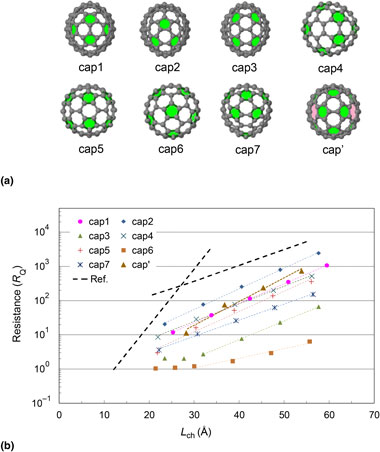Crossref Citations
This article has been cited by the following publications. This list is generated based on data provided by
Crossref.
Kim, Han Seul
Lee, Seung Jin
and
Kim, Yong‐Hoon
2014.
Distinct Mechanisms of DNA Sensing Based on N‐Doped Carbon Nanotubes with Enhanced Conductance and Chemical Selectivity.
Small,
Vol. 10,
Issue. 4,
p.
774.
Choi, Ji Il
Kim, Hyo Seok
Kim, Han Seul
Lee, Ga In
Kang, Jeung Ku
and
Kim, Yong-Hoon
2016.
Carbon nanobuds based on carbon nanotube caps: a first-principles study.
Nanoscale,
Vol. 8,
Issue. 4,
p.
2343.
Kim, Yong-Hoon
Kim, Hu Sung
Lee, Juho
Tsutsui, Makusu
and
Kawai, Tomoji
2017.
Stretching-Induced Conductance Variations as Fingerprints of Contact Configurations in Single-Molecule Junctions.
Journal of the American Chemical Society,
Vol. 139,
Issue. 24,
p.
8286.
Kim, So-Young
Ryou, Junga
Kim, Min Jae
Kim, Kiyung
Lee, Yongsu
Kim, Seung-Mo
Hwang, Hyeon Jun
Kim, Yong-Hoon
and
Lee, Byoung Hun
2020.
Performance Degradation in Graphene–ZnO Barristors Due to Graphene Edge Contact.
ACS Applied Materials & Interfaces,
Vol. 12,
Issue. 25,
p.
28768.
Tsvetkov, Nikolai
Khan, Muhammad Ejaz
Moon, Byeong Cheul
Kim, Yong-Hoon
and
Kang, Jeung Ku
2021.
Strain-Induced Metallization and Defect Suppression at Zipper-like Interdigitated Atomically Thin Interfaces Enabling High-Efficiency Halide Perovskite Solar Cells.
ACS Nano,
Vol. 15,
Issue. 1,
p.
1805.
Kim, Bum-Kyu
Kim, Tae-Hyung
Choi, Dong-Hwan
Kim, Hanul
Watanabe, Kenji
Taniguchi, Takashi
Rho, Heesuk
Kim, Ju-Jin
Kim, Yong-Hoon
and
Bae, Myung-Ho
2021.
Origins of genuine Ohmic van der Waals contact between indium and MoS2.
npj 2D Materials and Applications,
Vol. 5,
Issue. 1,
Jang, Hanbyeol
Song, Yumin
Seok, Yongwook
Im, Heungsoon
Kim, Tae Hyung
Lee, Joo-Hyoung
Kim, Yong-Hoon
and
Lee, Kayoung
2022.
Zero power infrared sensing in 2D/3D-assembled heterogeneous graphene/In/InSe/Au.
Nanoscale,
Vol. 14,
Issue. 8,
p.
3004.
Kim, Tae Hyung
Lee, Juho
and
Kim, Yong-Hoon
2023.
Electronic Transparency Limit of hBN Separation Layer for Quantum-Hybridization Negative Differential Resistance in Vertical Graphene/hBN/Graphene Heterojunctions.
p.
41.





